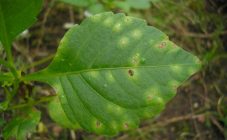Content:
The anemone flower is an attractive perennial, the petals of which begin to flutter with small gusts of wind. Translated from Greek, anemones are "daughters of the winds." The plant belongs to the Buttercup family. The culture is quite widespread throughout the world, it readily grows in regions with a temperate climate, and loves plains and mountain slopes. Today, there are approximately 160 varieties, each representative blooming differently, as well as at different times. Perennial anemone: species and varieties, cultivation features are the topic of today's article.
general description
Anemone is a perennial flowering crop. In height it can reach from 10 cm to 1 m. In Russia, there is an alternative name for the plant - anemone. This is due to the high sensitivity to wind. Even small gusts of wind lead to the fact that the flower on a small stalk begins to sway, this contributes to the spread of seeds and pollination.
Types and varieties
Today, there are more than one and a half hundred varieties. The most demanded and widespread among domestic agronomists:
- The crown anemone is a compact flowering plant, the height varies from 20 to 30 cm. The inflorescences can reach 6 cm in diameter, the anemone is tender, the flowering can be blue, pink, yellow, white, etc. The leaves are formed into a rosette. In the center of the inflorescence, a black pistil and stamens are formed. The red anemones belonging to the Don Juan variety are very popular;
- Anemone forest anemone is a spring tender plant that forms into a bush. In height, it can reach up to half a meter. The buds are formed solitary, they can be double and ordinary anemones. The diameter of the flower varies from 5 to 6 cm, in some representatives it can increase up to 8 cm. The plant has large leaves and elongated petioles;
- The hybrid anemone is famous for its varieties, which are characterized by a large abundance of shapes, sizes, colors and flowering periods. The most common hybrid forms of the Bland anemone and the Robustissim anemone;
- Dubravnaya anemone is not very common among domestic agronomists, plant height varies from 30 to 40 cm, flower diameter can also be different - from 2 to 4 cm.As a rule, white anemones are formed, but there are annual and perennial varieties with pink, blue and lilac flowers. There are even terry varieties. The main advantage of the plant is unpretentiousness in planting and care;
- Felt anemone is also unpretentious, like the oak variety. There are also terry varieties, the height can vary from 20 to 25 cm, during flowering, numerous flowers of a bright yellow color are formed, it grows in almost all types of soil.
Tuberous anemones: planting and care
There are quite a large number of varieties of anemone, each representative has its own individual characteristics.Some need careful care, while others are unpretentious and practically grow on their own. The main difference between the species lies in the formation of the underground part, in some it is tuberous, and in others it is rhizome. Tuberous varieties, in the absence of proper care, begin to wither and may disappear, and rhizomes are unpretentious. Features of cultivation, which every agronomist should familiarize himself with before growing anemone:
- the anemone is rhizome moisture-loving, therefore, during drought and hot days, the plant must be watered abundantly and regularly, preferably early in the morning or late in the evening;
- in autumn, it is recommended to apply complex mineral fertilizers to open ground, and before planting or during flowering, it is better to feed the plants with organic fertilizers;
- so that during winter frosts the culture does not freeze, the ground should be covered with a thick layer of dry fallen leaves or peat;
- the easiest way to reproduce is by seed, they are planted shortly before the onset of winter. If the climatic conditions in the region are harsh, then by spring you can grow seedlings from seeds at home.
Soil preparation
Before planting plants, you need to choose the right site and prepare the soil. Anemones willingly grow in partial shade conditions, the site should be spacious and protected from drafts. The rapidly developing root system is very fragile; even a light touch can break its integrity.
The soil should be moderately loose, well-drained and enriched with mineral and organic fertilizers. The most suitable conditions are loam with peat or deciduous soil. To make the soil loose, sand must be added to the planting pits. If the soil acidity is overestimated, then dolomite flour or wood ash must be added to it.
Seed preparation
When growing anemones with seeds, one should take into account the fact that they have low germination rates. As a rule, no more than a quarter of all planting material germinates. They must first be stratified, i.e. place for 1-2 months in a cold place. To do this, you need to mix peat with coarse sand in a ratio of 1 to 3, and then moisten the mixture well. It must be watered daily, as the seeds swell, they are mixed with the substrate, watered abundantly and placed in a well-ventilated area. The temperature should not exceed +5 degrees.
A few days after the first shoots appear, the container is transferred to the yard, sprinkled with straw or sawdust, and then buried in snow or soil.
If you do not want to spend so much time on growing anemone, it is enough to sow seeds in loose soil with the arrival of spring. Further, the boxes are buried in the yard and covered with branches.
Preparing anemone tubers
Before planting tubers in open soil, it is necessary to awaken them from hibernation. To do this, they will need to be immersed in warm water for several hours. Next, plant in containers filled with sand and peat.
The substrate in the container should be regularly and abundantly moistened. Before planting, the tubers can be soaked in another way - wrap the tubers with a cloth that is abundantly moistened with Epin's growth-stimulating solution, after which they are placed in a plastic bag, sealed and left for 6 hours. After the above manipulations, the tubers can immediately be planted in open soil.
Planting in open soil
Anemones thrive on fertile lungs and well-drained soils. The site should be sunny or semi-shaded.
The best time to plant in open soil is spring or fall. In cold regions, it is better to give preference to spring, and in autumn you can plant in warm regions.
It is recommended to use this planting method: moisten the soil abundantly, then press the tubers into it and sprinkle it with a little earth. The optimal interval between holes is 5-7 cm.After emergence, the tubers are more immersed in the soil.
After planting, the plants must be abundantly moisturized. Adult plants are watered as needed, plants do not need watering when they are at rest.
During flowering, flowers can be cut to decorate flower arrangements. The plant has good regenerative properties, so they have nothing to do with it.
Soon after flowering, the plant begins to wilt, turn yellow, and die off. This is how it should be, the anemones are preparing for rest.
It is not recommended to leave tubers in the soil for the winter. With the arrival of August, they should be dug up and dried well, treated with disinfectant solutions, for example, a weak solution of manganese.
Care
The plant is unpretentious in care. The most important thing is to maintain the optimum level of soil moisture during the entire waking period. Anemones react negatively to excess moisture, their roots begin to rot or undergo fungal diseases. It is recommended to cover the soil surface where anemones grow with a layer of mulch.
During flowering, it is recommended to apply organic fertilizers to the soil, with the exception of fresh manure - its chemical composition has a detrimental effect on the plant. In autumn, it is optimal to use mineral complexes.
Major diseases and pests, control of them
This culture is highly resistant to disease. In adverse weather conditions, slugs or snails may appear on the leaves. In this case, they should be collected by hand, after which the anemone and its peri-stem circle should be treated with metaldehydes. Sometimes the culture is affected by nematodes, moth caterpillars. Bushes affected by a nematode cannot be treated; they should be immediately dug up and burned. It is not recommended to plant anything at this place for the next few years. The drug Lepidocide works against the caterpillars of the scoop.
Anemones are fabulous plants, their shapes and bright colors create an amazing atmosphere of joy and happiness around them. Before you start growing a crop in your personal plot, you should familiarize yourself with all the features of agricultural technology.

















